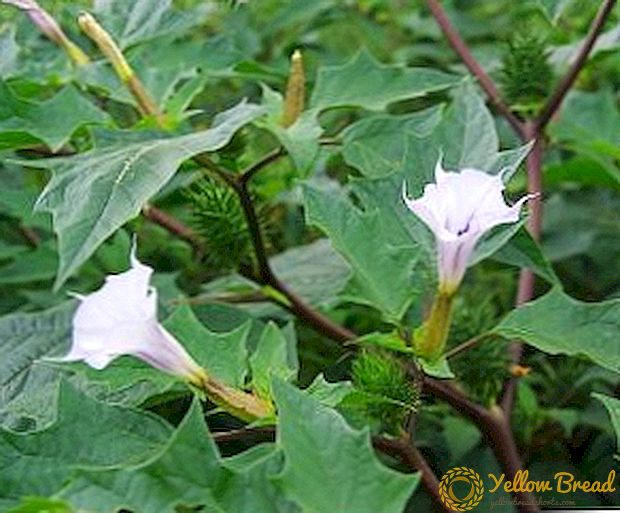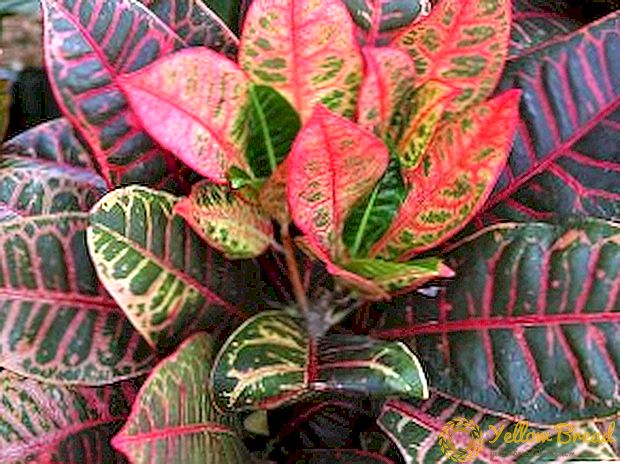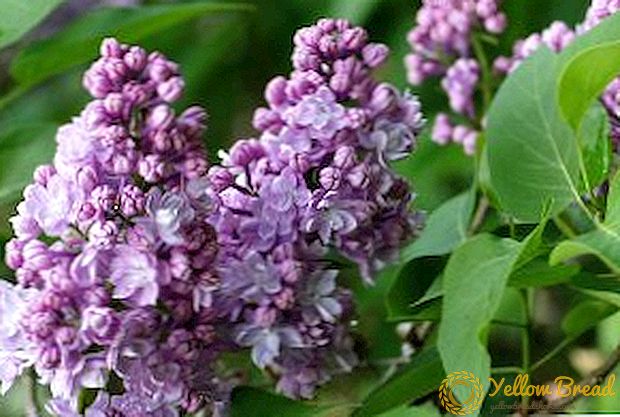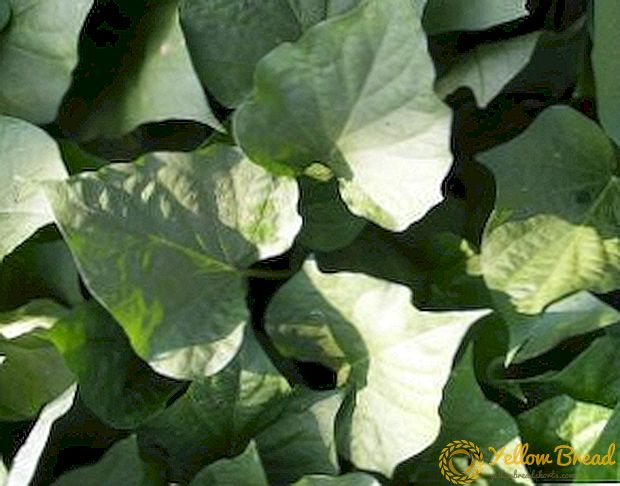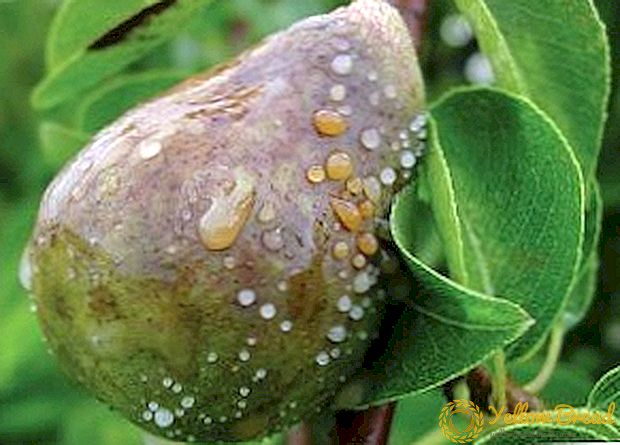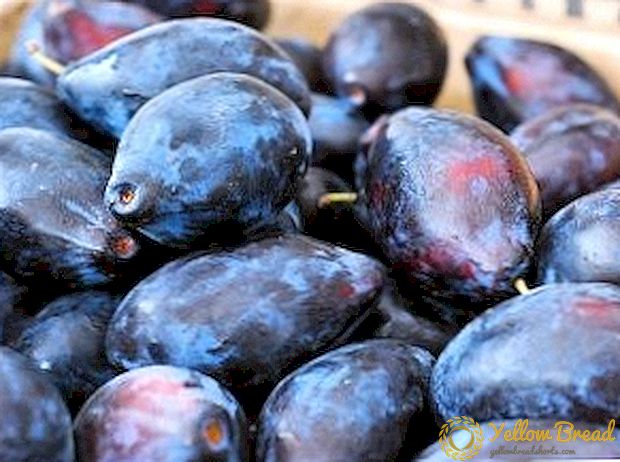
A great many varieties of plums were provoked not so much by the different taste preferences of its fans, but also by the territories under which breeders adapted each variety.
In particular, more than a dozen different plums were bred for the Moscow region alone. The article will reveal all the features of varieties and tell you how to plant and care for them.
- We select varieties for every taste
- Plum variety "Smolinka"
- Plum variety "Memory of Timiryazev"
- Plum variety "Blue Bird"
- How to care for the Moscow region plums?
- First, pruning
- Secondly, fertilizer
- Now about plum watering
- At the end, proceed to preparing for the winter
- Plum planting requirements
- Choosing a place to plant plums
- Direct landing
We select varieties for every taste
Plums are famous not only for their good taste, but also for healing properties. In addition, among the varieties can be found as different in size and color of the fruit. Among the Moscow region plums there are early and late ripening, different in terms of storage time and main purpose. In order not to be mistaken when choosing, we will describe in detail the most famous varieties.
Plum variety "Smolinka"

An excellent variety of plums, which is widely distributed throughout Central Russia and is excellent for growing in the Moscow region.To produce this variety, the Ochakovskaya Zheltaya plum was used, but in appearance Smolink looks more like its second parent - the Renklod Ulles variety.
A distinctive feature of this variety is its fruits, which have a very regular symmetrical oval-ovoid shape with poorly developed abdominal suture.
Matured fruits weigh about 35 grams. The color of the top layer of dense skin of the plum of this variety is dark purple, covered with a waxy coating. The cavity of the skin has a yellow-green color. The flesh is sweet and sour and very tender, yellow in color, quite juicy. Taste is sweet.
Fruit this variety ripen early - approximately in the period from 14 to 25 August. In addition to being used raw, the Smolinka plums are very good at making prunes from them, drying and freezing.
The tree can grow up to 5.5 meters in height, which makes it possible to attribute it to strong-growth trees. Crown shape - oval, average thickening. The bark of the tree has a brownish color, while its surface is very rough.
The variety is quite fruitful, in one season about 20 kilograms of high quality ripe fruits are collected from one tree.At the same time, the tree begins to bear fruit very early, already in the second or third year of tree growth.
It is worth noting the excellent taste of the fruit of this variety, but also its precociousness and fast terms of fruit ripening. The tree of this variety is moderately adapted to the frosty winters, however, it very quickly regenerates and restores its branches affected by low temperatures. Also, the high ability to recover is very positive when cutting wood.
The Smolinka variety is cultivated more in the areas of amateur gardeners, however it is very widely used by breeders as a donor of such qualities as excellent taste and large sizes of fruits.
Plum "Smolinka" is not capable of self-filing. Therefore, for it pollen is used plums "Blue Gift", "Super Storage", "Opal". The large size of the tree takes up a lot of garden space and makes it not convenient to harvest. Branches can break under the weight of ripening plums and require props.
Plum variety "Memory of Timiryazev"

This variety is suitable for cultivation not only in the Moscow region, but also perfectly survives throughout the rest of the Central Russian region and in the Middle Volga.Plum was bred as a result of crossing varieties such as Victoria and Skorospelka Krasnaya, from which she got her wonderful taste and excellent appearance.
Matured plums This variety is egg-shaped, medium in size. weigh only about 22 grams. The upper color of the skin of the fruit is yellow, covered with a large reddish spot on the sunny side of the plum.
Also characterized by subcutaneous currents, which have a red color. The abdominal suture near the plum in Memory of Timiryazev is practically invisible.
The yellow color of the pulp in its structure is fine-grained, but very dense. Fruit juiciness is average, but at the same time their aroma makes the taste unique. If we talk about taste, then it is worth noting superior acidity. The taste of plums was estimated at 4.2 points from 5 possible. 100 grams of fruit contains about 11 mg of ascorbic acid.
Sort plums "Memory of Timiryazev" considered late. Fruit maturity comes at the very end of August. In particular, the period of removal of fruits is considered the period from August 28 to September 3.
This variety can also be distinguished by sredneroslyuyu tree. His crown is characterized by a rounded bushy shape. The branches of the crown are not densely, which contributes to the average degree of foliage of the tree.Also, the tree is characterized by lowered shoots, the bark of which has a light brown color.
Fruiting parts of the plum tree "Memory of Timiryazev" are annual shoots. Also, part of the fruit is formed on the bouquet branches. The first fruiting tree comes at the age of 4 years and can last up to 21 years.
It is important that the variety is self-fertile and does not cause dusting difficulties. But still, the yield of the variety is slightly more than the average. On average, the yield per tree is about 9 kg per season.

It is worth paying attention to this variety because of the good quality of the fruits and their high suitability for transportation. In addition, the variety is self-propelled and is excellently restored after various injuries (including after pruning).
Tree pretty resistant to frost, although it requires considerable attention to preparing for the winter. Resistance to drought is average, the tree is very moisture-loving.
Such diseases of plums as klyasterosporioz and fruit rot of plum “Memory of Timiryazev” are practically not affected. In addition to amateur gardens, the variety grows well and bears fruit in industrial gardens.
In addition to careful preparation for the winter period, it will take a long time with the tree to protect it from tick lesions. Fruiting can be periodic, but this does not mean that the tree will delight the crop in a year in a year. At the experimental stations, it was determined that out of 16 years of tree growth, only 5 of them were barren.
Plum variety "Blue Bird"

Excellent variety for the Moscow region, which is distinguished by its bright blue fruits. Crimean scientists, who bred this variety, used as a donor the "Hungarian Caucasian" plum and supplemented it with the "Kabardian Early".
Thus, the first of the regions in which the Blue Bird plum was zoned was the North Caucasus. However, today it is quite widespread in the Central, in particular - in the Moscow region.
The variety is beautiful fruits large sizes, which in the mass make about 45 grams. The shape of the fruit is wide oval. The surface of the fruit has a purple color, which is covered on top with a very dense layer of wax. For this reason, the fruits that still hang on the tree and no one touched them, seem bluish in color.
The color of the blue bird flesh is yellow.At the same time it is very dense and extremely tasty. The taste of the fruit is very high, what is provided by the sweetness of the pulp. Stone of the fruit is very easily separated from the pulp. It is possible to eat fruits not only fresh, but also after processing into various types of preservation and dried fruits.
"Blue Bird" is a variety of average maturity. Fruits become suitable for use around mid-August.
The tree of this variety is distinguished by its large size. Also, the vigorous tree combines a large round crown. The branches of the tree are not very many, they do not thicken the crown and allow the fruit to ripen at the same time.
Big and tall tree able to delight very large yields. Besides, bears fruit tree regularly. It is worth noting the advantage that the plum "Blue Bird" is a variegated variety and its first harvests can be harvested within 2-3 years after planting a tree.
In addition to all the above-mentioned advantages and advantages of the variety, it is worth paying attention to its self-fertility. In addition, excellent in appearance, size and taste of the fruit are well suited for transportation over various distances.It is not afraid of a low-temperature variety, it shows a very high resistance to the most common diseases of plum - moniliasis, catastrophia and polystygosis.
There are practically no disadvantages of this variety. The only downside is his large and spreading crownwhich takes up a lot of garden space. But if you consider that this crown brings an incredible abundance of harvest, then the minus automatically turns into a very fat plus.
How to care for the Moscow region plums?
Plums, zoned specifically for the Moscow Region of the Central Region, do not differ from all other congregations in terms of their care requirements. But still, it is worthwhile to dwell on the most important aspects, which will help gardeners to grow not only an excellent and proper tree, but also to receive regular and tasty harvests from it.
First, pruning

Pruning pruning is recommended as well as the rest of the garden trees. The only difference is that it is not so demanding in the formation of the crown.
In addition to stimulating the growth of the tree and the formation of large fruits, pruning pruning helps fight various diseases. It is precisely because of the fight against diseases that the most common recommendations are pruning in spring, and not before the onset of frost.
This is done with the intention that the damage to the tree after removing the branches will not be damaged by frost. It is necessary to cut off the plum after the leaves bloom, and even in the summer, so that the tree does not feel sharp temperature drops.
The main task of the gardener is not just removing excess, damaged or dried branches, but also try not to damage the plum bark, as this can cause diseases. Do not forget to coat the cutting sites, especially large branches, with the help of garden pitch.
Secondly, fertilizer
Plum fertilizers are not whimsical and can easily develop without them. But as you grow a tree for the purpose of getting crops, you can not do without top dressing.
It is important to know that in the first years you should not fertilize the tree. After all, after spring planting, it still does not have time to settle down well and is practically not able to absorb nutrients from the soil, and if it starts to do it closer to the fall, then the seedling can suffer from excessively intensive growth from early frost.
In the second year of growth the tree should be fertilized with nitrogen. Fertilizing wood is recommended in the first and second half of June, adding nitrogen as irrigation. For 10 liters of water is made only 2 tablespoons. urea (can be replaced with liquid "Ideal").
Top dressing of fruit-bearing plums should include three main stages:
- Before the tree begins to bloom, we well dig up the soil and moisten it with a nutrient solution: for 10 liters of water, 2 spoons of urea + potassium sulfate. The norm for one tree is about 30 liters of this solution.
- In the period when the fruits on the tree are formed and acquire the desired shape in the soil, it is important to bring water, with 2 tbsp dissolved in it. urea, 3 tbsp. nitrophosphate (the norm is calculated for 10 liters of water). One tree will be enough 20-25 liters of this solution.
- After fruiting the tree requires watering with a solution of 2 tbsp. potassium sulfate and 3 tbsp. superphosphate. Up to 35 liters of this solution should be poured onto one tree.
Now about plum watering

About watering a lot was said in the previous subparagraph, but apart from watering for fertilizer, water must be brought in and just like that. After all plum is a very moisture-loving plant and heavily tolerating drought.
Therefore, the soil around the tree should be moistened regularly throughout the summer months and even in September. At the same time, it is necessary to water the tree regularly, otherwise there is a risk of cracking the fruit.
The fact that you have gone too far with watering will be indicated by the yellowness of the leaves and the drying of the top of the tree.
At the end, proceed to preparing for the winter
It is necessary to prepare plums for winter very carefully, since even relatively winter-resistant varieties can suffer from frost. The big disadvantage of plums is that with early blooming of the tree, the bark can rest, causing cracking of the bark.
Young trees not only recommended tie to a strong peg, but also completely bundle the entire crown in one pile. In large trees, which are no longer possible to bind so, each branch is tied to a separate peg.
The soil around the tree is covered with snow and hay.
Plum planting requirements
Choosing a place to plant plums
Plum loves well lit places. Therefore, when laying a garden in any case do not allow shade plum other trees. Also, do not allow the plum to land in places that are blown by the winds.In this case, you risk losing the crop, even if the tree has flowered very intensively.
Direct landing
The pit under the sink is dug up several weeks before the immediate landing. At the same time, it digs up to 60 centimeters, the top layer of the soil is mixed with 2 to 1 compost and poured into the bottom of the pit. You should also drive a strong stake into the pit., to which we tie up our seedling after planting. The count should be placed on the north side of the seedling.
After planting, the tree should be watered well and cover the soil around it with peat or humus (this will keep moisture in the ground for longer).
For planting plums in the Moscow region is best to choose the spring. Although in principle, the plum is often planted in the fall. But in Moscow the tree will not have time to go into a state of calm before the onset of frost, so it may just freeze and not move back in the spring.

